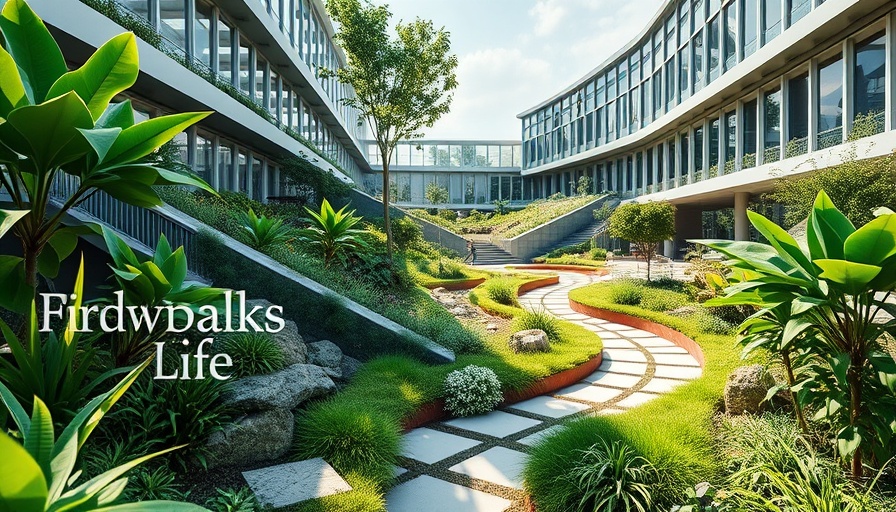
Reimagining Landscapes: The Role of Innovation in Urban Design
In a world increasingly strained by climate change, biodiversity loss, and social inequities, emerging leaders in landscape architecture are stepping forward with bold solutions to transform urban spaces. At the recent Landscape Architecture Foundation (LAF)’s Innovation + Leadership Symposium, six fellows introduced groundbreaking ideas aimed at reshaping infrastructure, public engagement, and sustainability initiatives.
Decarbonizing Our Infrastructure
A pressing issue identified by Anya Domlesky, ASLA, is the enormous carbon footprints associated with construction materials like concrete and steel. She emphasized the importance of reducing embodied carbon emissions by reusing existing infrastructures instead of starting from scratch. Domlesky shared enlightening examples where old bridges were creatively remodelled for bikes and pedestrians, illustrating how effective adaptation can minimize environmental impact while fostering climate-friendly urban lifestyles.
Such adaptations are not just about reducing emissions; they are about reimagining the urban landscape. For instance, Domlesky noted that if cities managed to shrink roadways by just 10%, they could gain around $28 billion in value from newly available space for recreational use or community engagement.
Transforming Water Bodies for Ecological Resilience
Policy change is another critical element of sustainable futures as explained by Aaron Hernandez, ASLA. Centering his discussion on Toronto, he illuminated how the rights of industries have often overshadowed the rights of nature, ultimately leading to a landscape rife with concrete and pollution. Hernandez shared how granting legal rights to nature—such as rivers and forests—could revolutionize urban governance and enforce genuine ecological stewardship, making way for restoration efforts led by Indigenous communities.
The Global Impact of Local Decisions
One of the critical takeaways from the symposium is the power of local initiatives to skew the global trajectory of environmental recovery. The rights of nature movement, gaining traction worldwide, has led to significant legal victories, such as the Mutuhekau Shipu in Canada, which was granted rights to protect its ecosystem. These changes offer not only lessons but also inspire action that others in urban settings can emulate.
Why This Matters to Landscape Professionals
For landscapers, architects, builders, and maintenance companies in Muskegon and beyond, understanding these emerging perspectives is crucial. Transitioning to eco-friendly practices is no longer just a trend; it’s part of the survival strategy for both businesses and the environment. Landscape professionals can seize this moment to transform local green spaces, advocate for rights of nature, and enhance community wellbeing through innovative landscaping approaches.
Next Steps for the Green Industry
As professionals engage in weekly yard upkeep or are involved in residential turf care, it’s essential to integrate principles of sustainability into their daily operations. Whether it’s adopting eco-friendly yard services or leveraging native planting solutions, landscapers have a unique opportunity to lead by example, setting a precedent for responsible landscaping.
The innovations discussed at the LAF symposium challenge professionals to rethink not just how landscapes are designed but their broader implications for climate action. As we approach inevitable urban changes, embracing these fresh ideas can set a sustainable trajectory for the future of landscaping.
 Add Row
Add Row 
 Add
Add 


Write A Comment